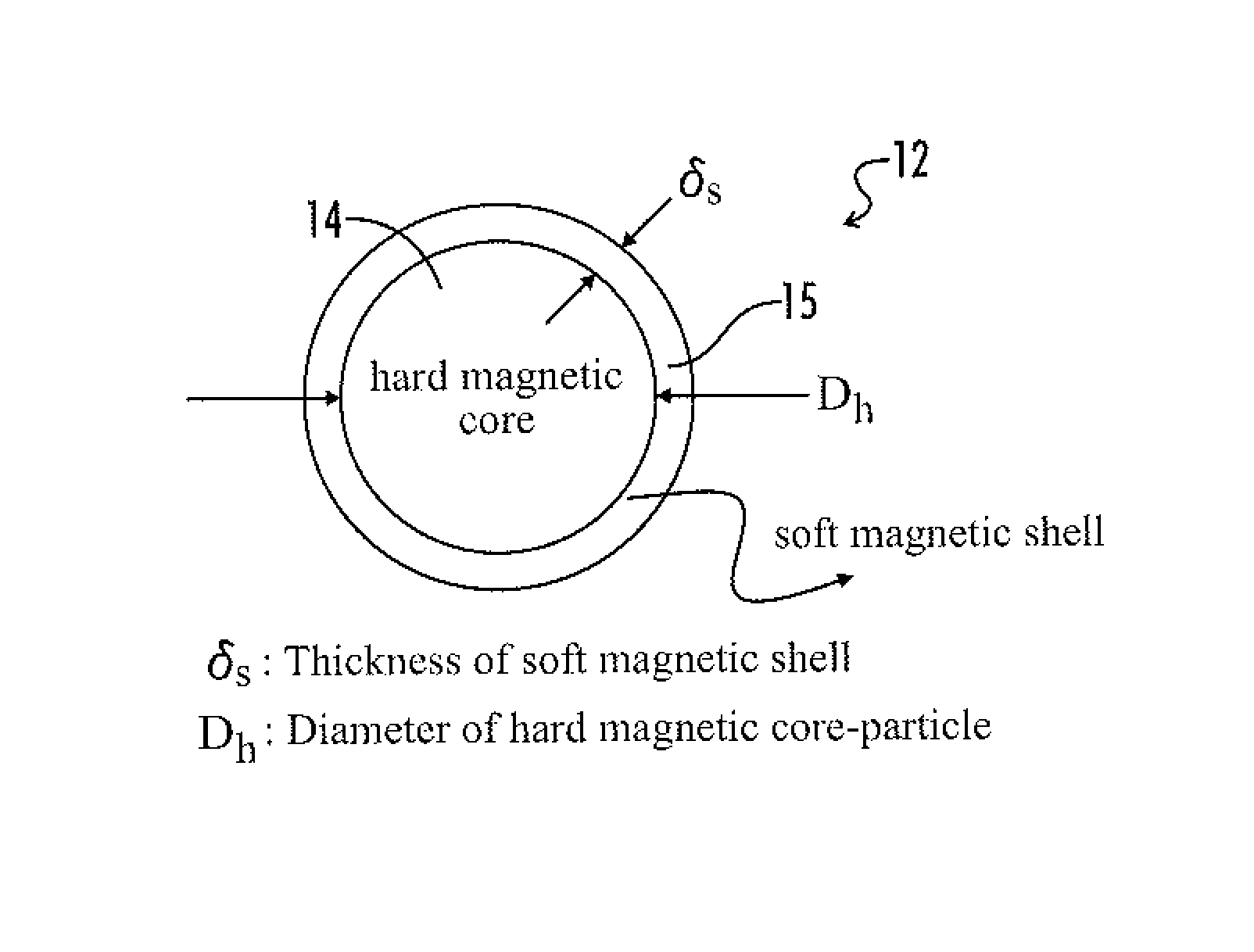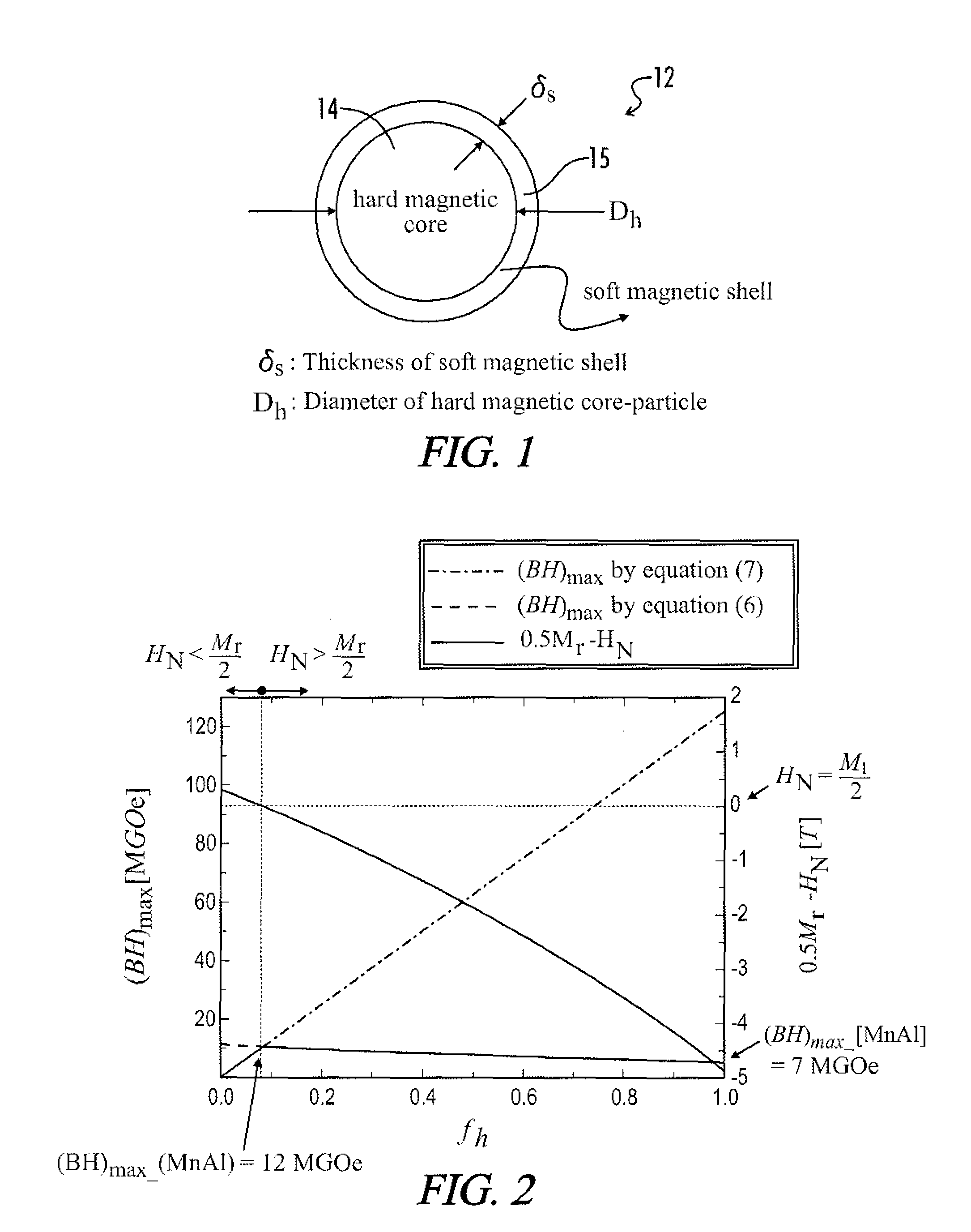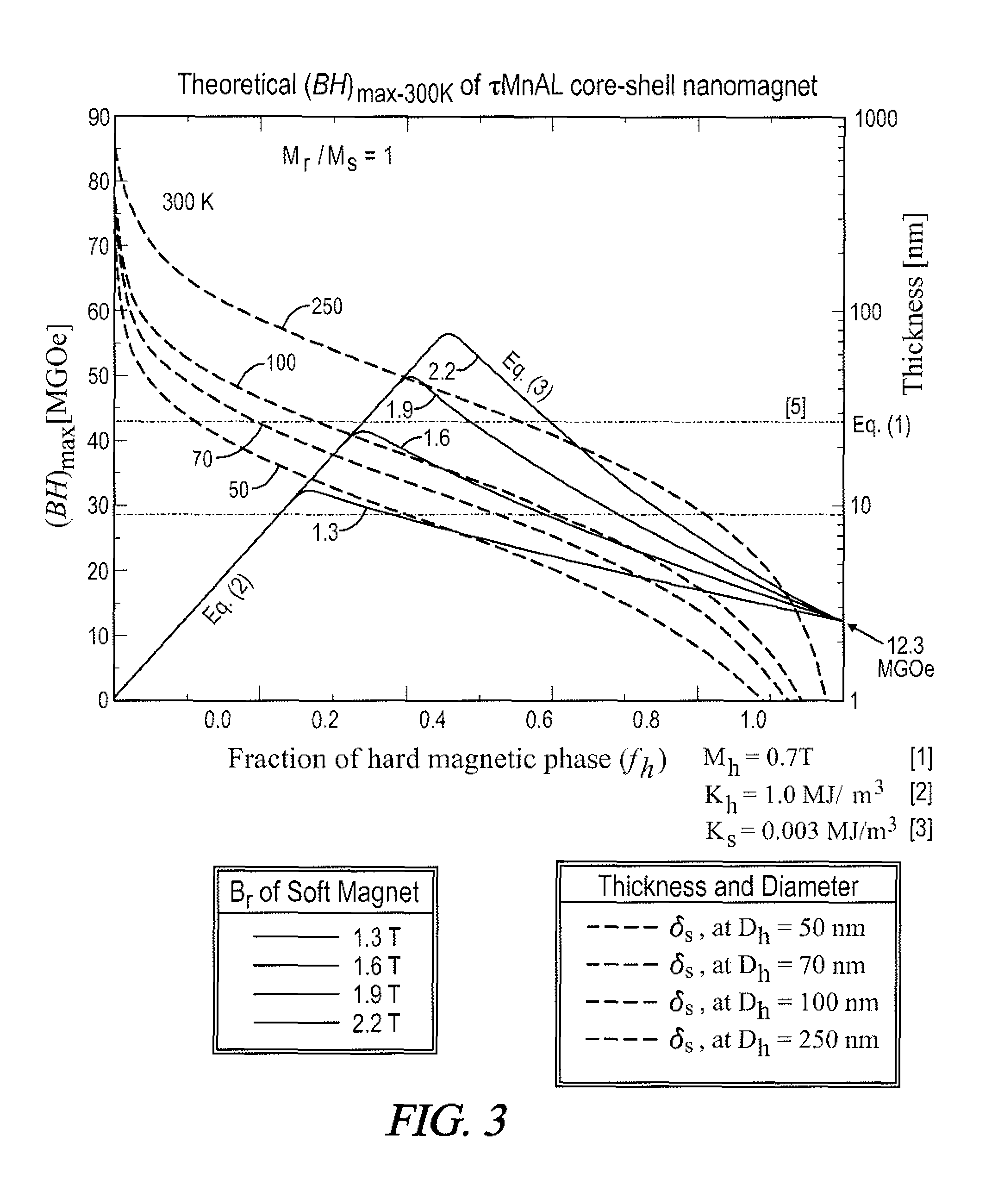Magnetic exchange coupled core-shell nanomagnets
a core-shell and nano-magnet technology, applied in the direction of magnetic materials for record carriers, magnetic bodies, cores/yokes, etc., can solve the problems of many permanent magnets degrading at high temperature, many permanent magnets having expensive materials, and many unsuitable for some applications
- Summary
- Abstract
- Description
- Claims
- Application Information
AI Technical Summary
Benefits of technology
Problems solved by technology
Method used
Image
Examples
Embodiment Construction
[0016]The present disclosure generally pertains to magnetic exchange coupled core-shell nanomagnets. In one exemplary embodiment, a permanent magnet is fabricated such that it has a magnetically hard core surrounded by a thin magnetically soft shell. The magnetically hard core provides a relatively high intrinsic coercivity (Hci), and the magnetically soft shell provides a relatively high magnetic flux density (B). Due to magnetic exchange coupling between the core and shell, a relatively high maximum energy product (BH)max is achievable over a wide temperature range, including temperatures above 150° C. Further, such effects can be achieved without using rare-earth metals or precious metals helping to keep the manufacturing costs of the magnet low. To allow sufficient exchange magnetic coupling between the core and shell, the overall shell thickness is controlled such that the width of the shell is less than two times the Bloch domain wall thickness of the core.
[0017]FIG. 1 depicts...
PUM
| Property | Measurement | Unit |
|---|---|---|
| thickness | aaaaa | aaaaa |
| Curie temperature | aaaaa | aaaaa |
| Curie temperature | aaaaa | aaaaa |
Abstract
Description
Claims
Application Information
 Login to View More
Login to View More - R&D
- Intellectual Property
- Life Sciences
- Materials
- Tech Scout
- Unparalleled Data Quality
- Higher Quality Content
- 60% Fewer Hallucinations
Browse by: Latest US Patents, China's latest patents, Technical Efficacy Thesaurus, Application Domain, Technology Topic, Popular Technical Reports.
© 2025 PatSnap. All rights reserved.Legal|Privacy policy|Modern Slavery Act Transparency Statement|Sitemap|About US| Contact US: help@patsnap.com



